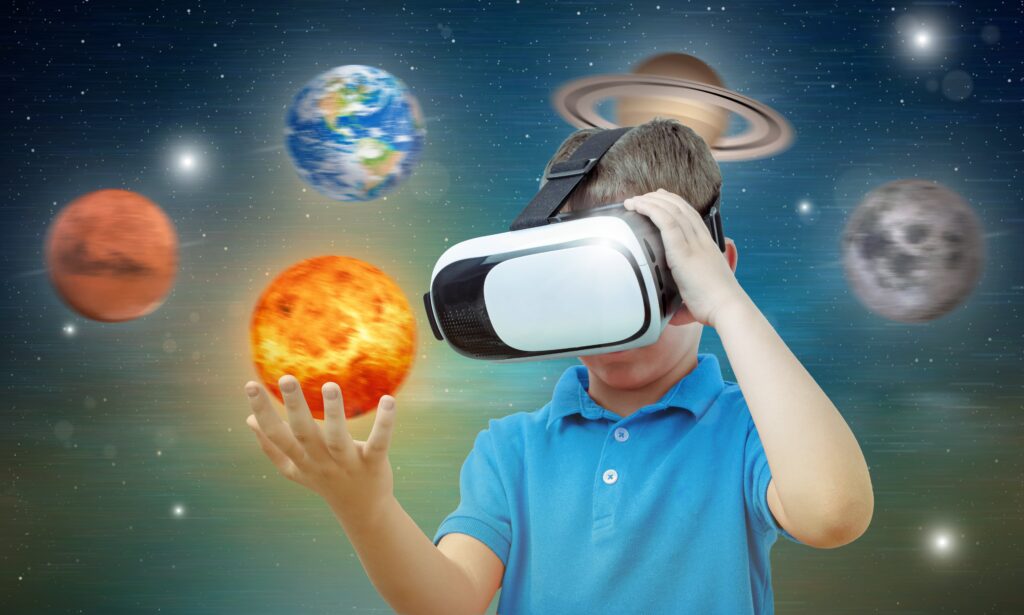In recent years, Virtual Reality in Education has emerged as a transformative force, redefining learning experiences for students and educators alike. By immersing learners in interactive environments, VR technology enhances engagement and fosters a deeper understanding of complex subjects. This innovative approach not only captivates students’ attention but also caters to diverse learning styles, making education more accessible and effective. As we delve into the world of virtual reality, we will explore its potential to revolutionize traditional teaching methods and create dynamic learning experiences.
Throughout this article, you will discover the various applications of virtual reality in educational settings, from virtual field trips to simulations that bring theoretical concepts to life. We will examine case studies that highlight successful implementations of VR in classrooms, showcasing how educators are harnessing this technology to improve student outcomes. Additionally, we will discuss the challenges and considerations that come with integrating VR into curricula, ensuring that you are well-informed about both the benefits and potential pitfalls.
As you continue reading, prepare to be inspired by the possibilities that virtual reality offers in reshaping the educational landscape. Whether you are an educator, a student, or simply curious about the future of learning, this exploration of Virtual Reality in Education promises to provide valuable insights and provoke thought on how we can enhance the learning experience for generations to come. Join us on this exciting journey into the future of education!
Virtual reality (VR) is transforming the educational landscape by providing immersive learning experiences that engage students in ways traditional methods cannot. This article explores various aspects of VR in education, highlighting its potential to redefine learning experiences.
Enhancing Engagement Through Immersive Learning
One of the most significant advantages of virtual reality in education is its ability to enhance student engagement. Traditional learning methods often struggle to capture students’ attention, leading to disengagement and lack of motivation. VR, on the other hand, creates an interactive environment where students can actively participate in their learning process. By immersing students in realistic scenarios, VR encourages exploration and curiosity, making learning more enjoyable and effective.
For instance, students studying history can virtually visit ancient civilizations, experiencing the culture and environment firsthand. This immersive experience not only makes learning more engaging but also helps students retain information better, as they can connect emotionally with the content. As a result, VR has the potential to revolutionize how educators approach lesson planning and student interaction.
Personalized Learning Experiences
Virtual reality allows for personalized learning experiences tailored to individual student needs. In a traditional classroom, it can be challenging to address the diverse learning styles and paces of each student. VR technology can adapt to different learning preferences, providing customized content that meets each student’s unique requirements. This adaptability fosters a more inclusive learning environment, where all students can thrive.
For example, students who struggle with abstract concepts in subjects like mathematics can use VR simulations to visualize and manipulate these concepts in a three-dimensional space. This hands-on approach not only aids comprehension but also builds confidence in students who may feel overwhelmed in a conventional classroom setting. By leveraging VR, educators can create a more equitable learning experience for all students.
Bridging the Gap Between Theory and Practice
Virtual reality serves as a powerful tool for bridging the gap between theoretical knowledge and practical application. Many subjects, such as science and engineering, require hands-on experience to fully grasp complex concepts. VR enables students to conduct virtual experiments and simulations, allowing them to apply theoretical knowledge in a safe and controlled environment.
For instance, medical students can practice surgical procedures in a virtual setting, gaining valuable experience without the risks associated with real-life operations. This practical exposure not only enhances skill development but also prepares students for real-world challenges. By integrating VR into the curriculum, educators can ensure that students are better equipped for their future careers.
Collaborative Learning Opportunities
Collaboration is a crucial aspect of the learning process, and virtual reality can facilitate teamwork among students, regardless of their physical location. VR platforms enable students to work together in a shared virtual space, fostering communication and collaboration on projects and assignments. This collaborative environment encourages peer-to-peer learning, where students can share ideas and perspectives, enhancing their overall understanding of the subject matter.
Moreover, VR can connect students from different parts of the world, promoting cultural exchange and global awareness. For example, students can collaborate on a science project with peers from another country, gaining insights into different approaches and methodologies. This global perspective enriches the learning experience and prepares students for an increasingly interconnected world.
Overcoming Physical Limitations in Education
Virtual reality has the potential to overcome physical limitations that may hinder students’ learning experiences. For students with disabilities or those who face geographical barriers, traditional education can be challenging. VR technology can create accessible learning environments that cater to diverse needs, ensuring that all students have equal opportunities to learn and succeed.
For instance, students with mobility impairments can explore virtual field trips to museums or historical sites without the constraints of physical travel. This accessibility not only enhances their learning experience but also fosters a sense of inclusion and belonging. By utilizing VR, educators can create a more equitable educational landscape that accommodates all learners.
Cost-Effective Training Solutions
Implementing virtual reality in education can lead to cost-effective training solutions for institutions. While the initial investment in VR technology may seem high, the long-term benefits can outweigh the costs. VR can reduce the need for physical materials, travel expenses, and other logistical challenges associated with traditional learning methods.
For example, vocational training programs can utilize VR simulations to provide hands-on experience without the need for expensive equipment or facilities. This not only saves costs but also allows institutions to allocate resources more efficiently. As VR technology continues to evolve, it is likely to become an increasingly viable option for educational institutions seeking to enhance their training programs.
Assessing Learning Outcomes with VR
Assessing student learning outcomes is a critical aspect of education, and virtual reality can provide innovative assessment methods. Traditional assessments often rely on standardized tests, which may not accurately reflect a student’s understanding or skills. VR can offer immersive assessments that evaluate students’ abilities in real-time, providing a more comprehensive view of their learning progress.
For instance, educators can create VR scenarios where students must apply their knowledge to solve problems or complete tasks. This hands-on assessment approach allows for a more accurate evaluation of a student’s capabilities, as it measures their performance in a realistic context. By incorporating VR into assessment practices, educators can gain valuable insights into student learning and adjust their teaching strategies accordingly.
Future Trends in Virtual Reality Education
The future of virtual reality in education is promising, with ongoing advancements in technology and pedagogy. As VR becomes more accessible and affordable, its integration into educational settings is expected to grow. Emerging trends, such as the use of artificial intelligence and machine learning in VR applications, will further enhance personalized learning experiences and assessment methods.
Additionally, the development of collaborative VR platforms will enable students to engage in global learning experiences, fostering cross-cultural understanding and cooperation. As educators continue to explore the potential of VR, it is essential to stay informed about these trends and adapt teaching practices to leverage the benefits of this transformative technology.
| Aspect | Description |
|---|---|
| Introduction | Virtual Reality (VR) is transforming education by providing immersive learning experiences that enhance engagement and understanding. |
| Enhanced Engagement | VR captures students’ attention and motivates them to participate actively in their learning process. |
| Real-World Simulations | Students can experience real-world scenarios in a safe environment, allowing for practical application of knowledge. |
| Accessibility | VR can make education more accessible, providing opportunities for students who may have physical or geographical limitations. |
| Collaboration | VR facilitates collaborative learning experiences, enabling students to work together in virtual environments regardless of their physical location. |
| Personalized Learning | VR allows for tailored educational experiences that cater to individual learning styles and paces. |
| Challenges | Despite its benefits, VR in education faces challenges such as high costs, the need for technical training, and potential health concerns. |
| Future Prospects | The future of VR in education looks promising, with ongoing advancements in technology and increasing adoption in classrooms. |



